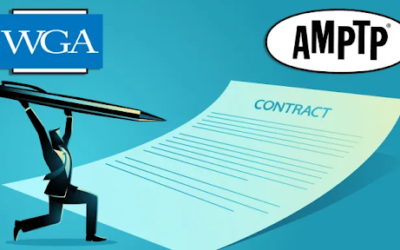When looking at the various ratings given to films released in the United States by the Motion Picture Association of America (MPAA), it can be quite perplexing as to how a film is rated and why, especially when it comes to films given different ratings despite being targeted at the same general audiences. Take two releases from 2018: the superhero blockbuster “Venom” and the indie teen drama “Eighth Grade”. The former tells the story of a man who becomes attached to an alien parasite that requires him to murder people for sustinence; the latter revolves around the real-life struggles of an insecure eighth grade girl. From those descriptions, one would assume that, despite both films being aimed at a teenage audience, “Venom” would have a more restrictive rating than “Eighth Grade”.
The exact opposite is true. Despite containing multiple scenes depicted intense action, brutal acts of violence, and other forms of disturbing imagery, “Venom” was only given a PG-13 rating. In contrast, “Eighth Grade” is significantly tamer when it comes to the events it depicts, yet due to (according to the MPAA) one too many uses of specific language, the film is rated R. To many comparing the two, these ratings come across as absurd. Why is a realistic depiction of teenage life considered less suitable for younger audiences than a seemingly endless string of murder and violence?
Unfortunately, this is par for the course when it comes to MPAA ratings. For whatever reason, violence tends to be graded less harshly in movies than other subject matters like sex, language, and drugs. In fact, according to a 2017 study, the amount of violence in PG-13-rated films has surpassed that of violence in R-rated films. Yet when it comes to sex or language, which many consider less psychologically damaging than violence, the MPAA will often impose higher ratings for lower amounts of such content. While a PG-13 rating will allow for a single use of the f-word (and even then, only if it’s not used in a sexual context), any more will immediately bump the rating up to R. This is the case with “Eighth Grade”, which passed this limit and ended up receiving an R, despite otherwise meeting all the standards of a film that a PG-13 (or perhaps even PG) rating would be appropriate for?
Why is there such a consistently negative bias when it comes to how the MPAA rates the films they are given? How are these films even rated in the first place? And who is it that decides what rating a film gets and for what reasons? Given the large number of films submitted to the MPAA each year, from a major blockbuster like “Avengers: Endgame” to a minor indie like “Honey Boy”, one would think there would be at least hundreds, if not thousands, of people involved with the ratings board, each member coming from a different background and possessing different values that might influence how they view certain subject matter. One would think that so many varying opinions would allow for each film submitted to receive a more fair and nuanced rating.
The reality is of significantly smaller scale however, and to an alarming degree as well. A 2018 report by the Los Angeles Times revealed that the MPAA ratings board consisted of nine members – five women and four men, all of whom are parents to children between the ages of five and twenty-one. This number can rise to as high as thirteen and as low as eight in a given year, meaning that the MPAA has, on average, around ten or eleven people rating every film to be released in the United States. This is a problem.
What is most troubling about how the MPAA ratings board is composed is how there is very little information disclosed about these board members apart from their gender, parental status, primary career, and native state (with the most recent board hailing from states including Hawaii and Ohio). Because of this limited amount of information accessible to the public, it raises questions about how diverse these people are and how those factors influence what ratings they vote to give a movie.
Two such factors relating to the diversity of the MPAA ratings board are race and sexual orientation, and when it comes to a film like “Moonlight”, the 2016 winner of the Best Picture Oscar, both of these factors can have an impact on how each board member might have judged its content. “Moonlight”, a coming-of-age story of a young gay black man living in Miami, was, as determined by the MPAA, rated “R for some sexuality, drug use, brief violence, and language throughout”. While it’s hard to argue that the film doesn’t contain any form of sex, language, or drug use, what is more debatable is whether or not these kinds of content are prevalent enough for an R rating, and the background of an MPAA rater can influence this. On the one hand, a white heterosexual conservative might be more biased against the film’s subject matter and therefore want to give the film the highest rating possible. On the other hand, someone who is black or a member of the LGBT community, someone more likely to identify with the characters and story, may want to impose a lower rating to increase access to a larger number of people.
If there was greater knowledge of how diverse the MPAA ratings board is, then there would be less concern as to what mindset is used to determine the rating of a given film. As is though, the lack of background information provided leaves only assumptions as to who these people are. For all that is known, the MPAA ratings board is likely to be made up of only white heterosexual conservatives, people who may be biased when it comes to films revolving around characters who do not share their background.
A more conservative mindset might also explain why certain subjects like sex and violence are judged to such dramatically different degrees. While not exactly the same from person to person, many conservatives tend to hold the view that any sexual content is inherently bad, whereas violence (as long as it’s considered “good” or necessary) is more acceptable. Of course, this is a very simple interpretation of this viewpoint, as many other factors should be taken into consideration, including as the graphic detail a specific act or the severity of such an act’s consequences. Still, even with these factors in mind, the general conservative perspective when it comes to judging film content is “violence good, sex bad”.
If the general stance of the MPAA ratings board does lean more heavily towards a conservative bias, that would explain why even films aimed at the youngest of audiences are still given ratings that, while not too restrictive, are arguably higher than necessary. Last year’s animated Christmas film “Klaus”, for example, is rated “PG for rude humor and mild action”. While it’s not unreasonable to take action and humor into account when it comes to ratings, even a PG rating seems to be a bit much for a film targeted towards all ages. Is a single chase scene or a quick fart joke enough for the film to require parental guidance in order for their children to watch it? Many would say no, but this is not the case according to the MPAA. Such reasoning has resulted in the G rating going nearly extinct, with only one major release, Disney/Pixar’s “Toy Story 4” being the sole major release to receive this lowest rating.
It should be clear by this point that MPAA ratings are questionable at best and undeservingly harsh at worst. The fact that there are so few people giving input for these ratings only makes this situation even more frustrating, as does the lack of available information that lets people know who it is that is deciding who is rating the movies they watch. When there is the same number of people in the council of a single city like Seattle as there is the number of people judging hundreds of movies intended to be shown across the entire country, the process in which these movies are being graded starts to look considerably less fair.
So what is the solution? While there’s no guarantee that the MPAA rating system can be fixed in an instant, there are three things that could hold the key to rating films on a more reasonable level: numbers, diversity, and public awareness. Not only should there be significantly more people hired to rate films, but this increased number of people should reflect a greater variety of race, religion, sexuality, and so on. Revealing too much information about these people to the public can be a privacy concern, but this should not prevent the MPAA from disclosing its demographics. Those who see films should have the right to know who is rating them.
The push for diversity is something that just about every aspect of the film industry still struggles with. If the MPAA does, as CEO Charles Rivkin claims, “capture what America is thinking [and] listen to its consumers”, it needs to prove it.




